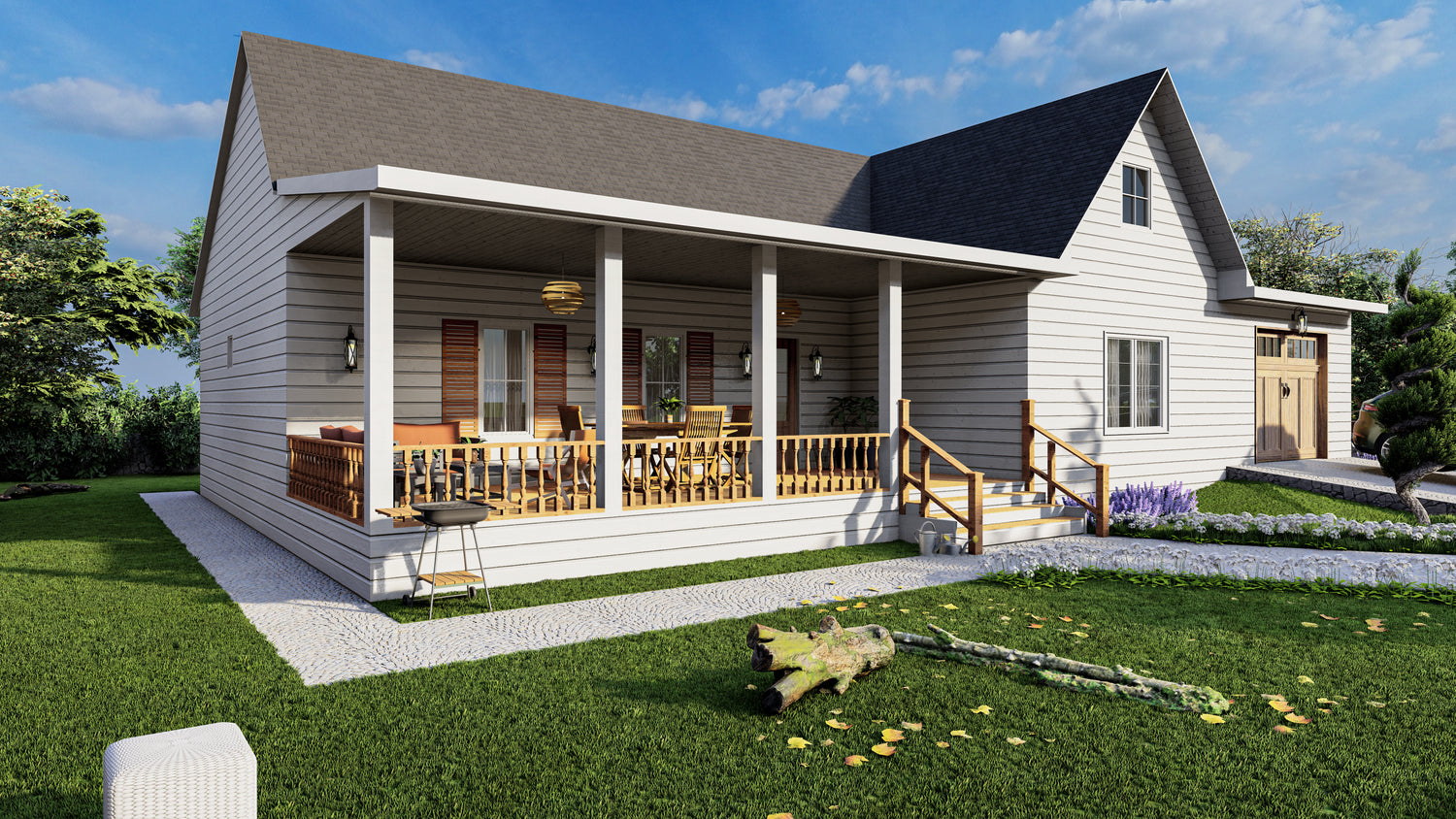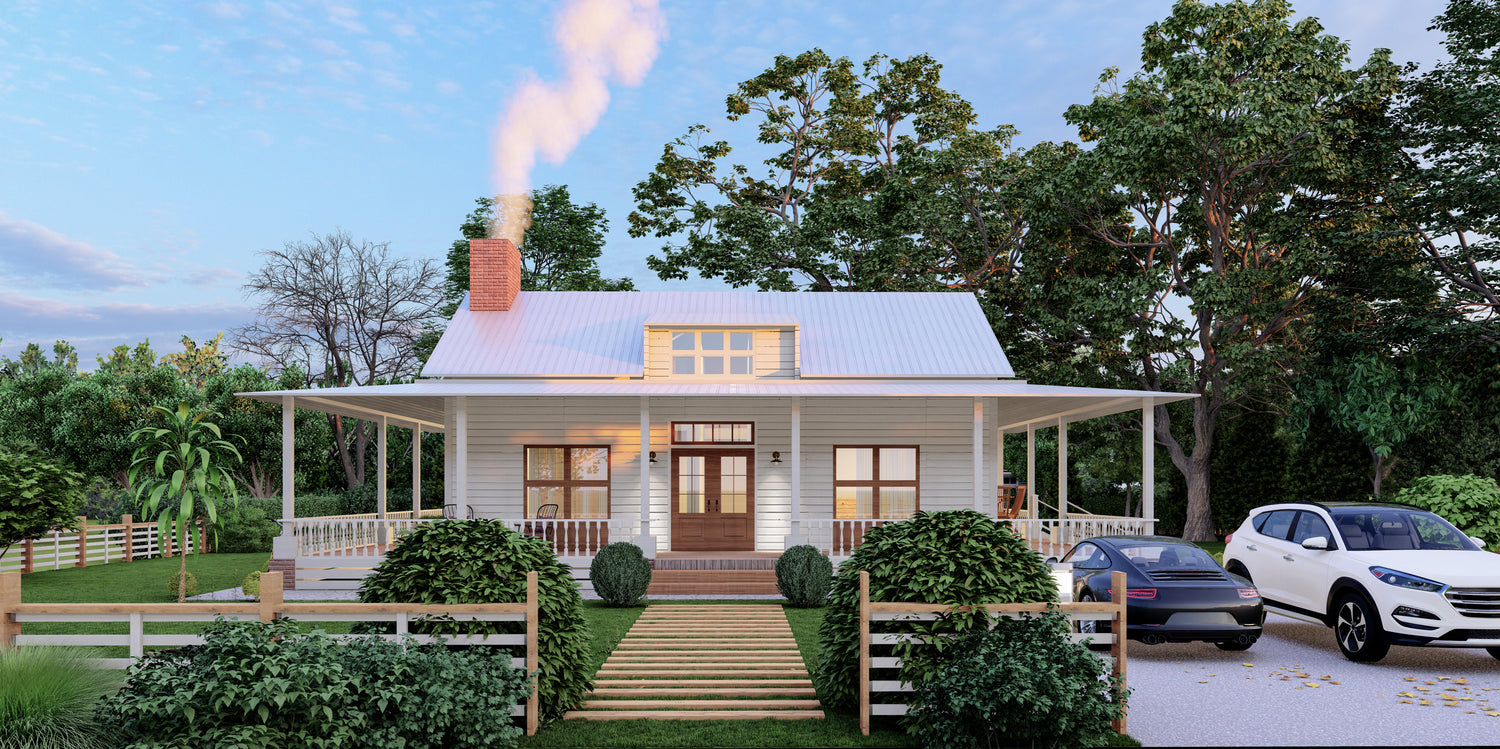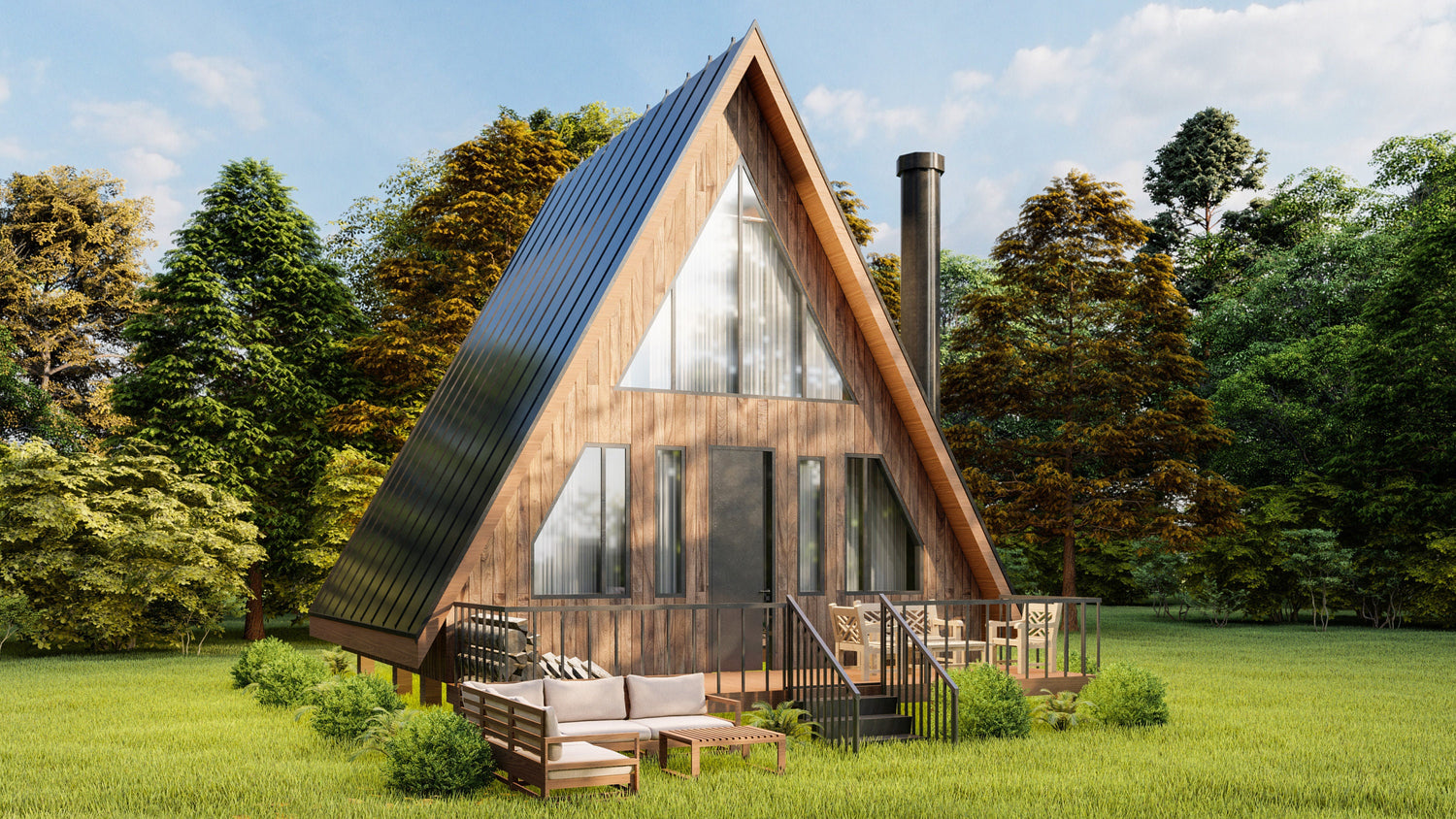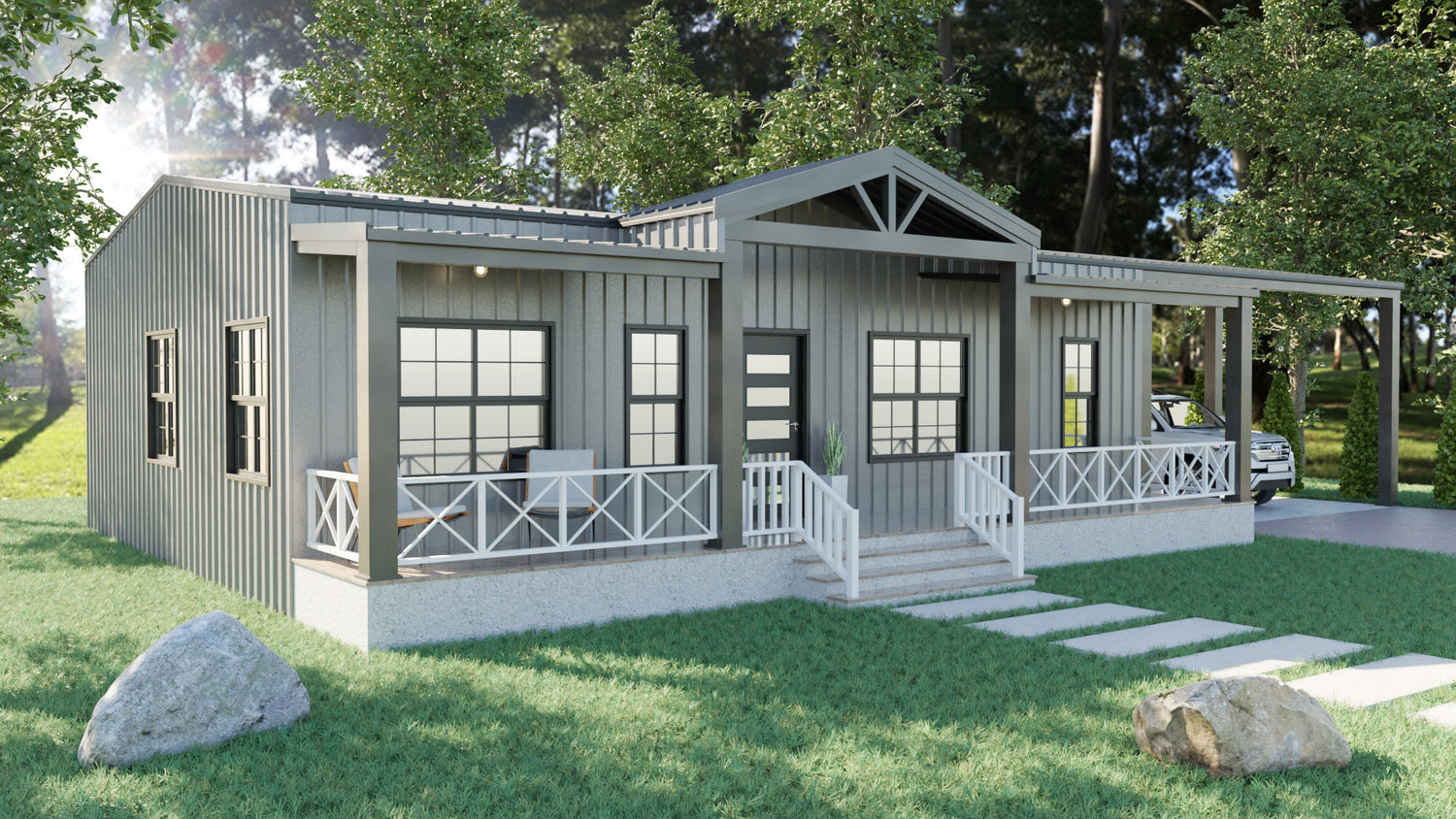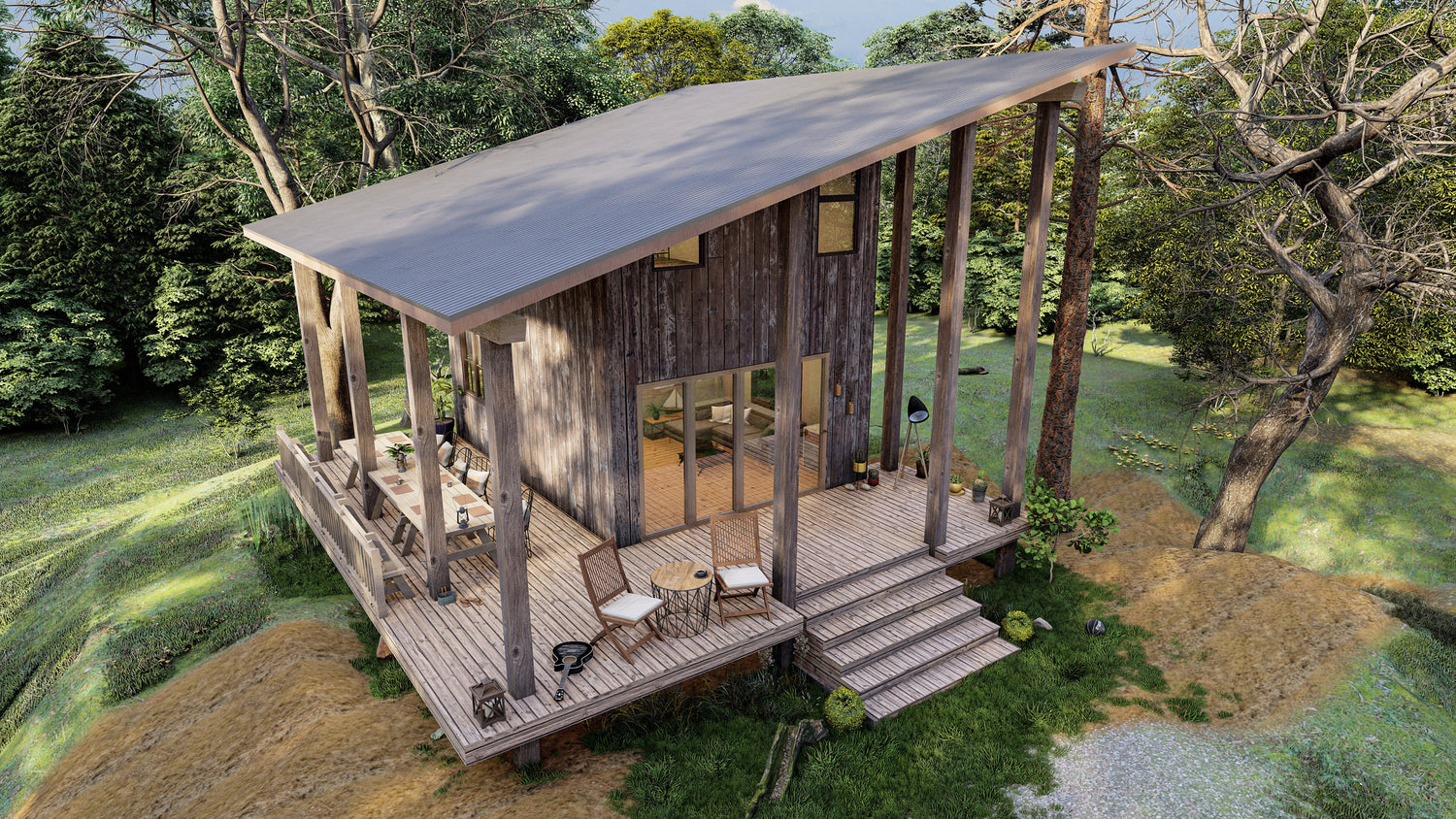Sustainability and eco-friendliness have become essential considerations in modern architectural design. In the realm of farmhouse design, these principles are driving the creation of sustainable farmhouses that not only blend with their natural surroundings but also reduce their environmental footprint. In this article, we will delve into the world of sustainable farmhouse design, exploring its key features, benefits, and the impact it has on eco-friendly living.

- Harmonizing with Nature:
Sustainable farmhouses are carefully integrated into their natural surroundings. Architects and designers aim to create structures that complement the landscape, utilizing eco-friendly construction materials and techniques that minimize disruption to the environment.
- Passive Solar Design:
One of the fundamental principles of sustainable farmhouse design is passive solar heating and cooling. These homes are strategically oriented to maximize natural light and heat during the winter months while providing shading and cooling during the summer. This reduces the need for artificial heating and cooling systems, resulting in energy savings.
- Energy Efficiency:
Sustainable farmhouses prioritize energy efficiency through features such as high-efficiency insulation, LED lighting, energy-efficient windows, and energy-saving appliances. Some also incorporate renewable energy sources like solar panels and wind turbines to generate clean energy on-site.
- Water Conservation:
Water is a precious resource, and sustainable farmhouses are designed with water conservation in mind. Rainwater harvesting systems, low-flow fixtures, and graywater recycling help reduce water consumption and minimize the strain on local water supplies.
- Eco-Friendly Materials:
Sustainable farmhouses often use eco-friendly and recycled building materials. These materials are not only environmentally responsible but also contribute to a healthier indoor air quality for occupants.
- Efficient Land Use:
Farmhouses designed for sustainability also consider the efficient use of land. Thoughtful planning may include features like permaculture gardens, greenhouses, and integrated farming practices to promote self-sufficiency and reduce the ecological impact of the property.
- Biodiversity and Wildlife Habitat:
Sustainable farmhouses seek to enhance biodiversity by creating natural habitats for local wildlife. This can include the planting of native vegetation, creating ponds or wetlands, and establishing wildlife corridors to support local ecosystems.
- Longevity and Durability:
These farmhouses are built to last, with an emphasis on durability and minimal maintenance. This not only reduces the need for frequent renovations but also minimizes waste over the long term.
- Sustainable Lifestyle:
Sustainable farmhouses promote a holistic approach to eco-friendly living. They often include spaces for composting, recycling, and eco-conscious practices, fostering a sustainable lifestyle for their occupants.
- Connection to the Outdoors:
Sustainability is not limited to the building itself. Sustainable farmhouses prioritize outdoor living spaces that allow occupants to connect with nature. Features like covered porches, outdoor kitchens, and garden spaces provide opportunities for relaxation and outdoor activities.
In conclusion, sustainable farmhouse design is a testament to the synergy between modern architecture and ecological responsibility. These homes are not only beautiful and functional but also reduce their environmental impact while providing a high quality of life for their occupants. Sustainable farmhouses offer a glimpse into a future where eco-friendly living is seamlessly integrated into the very fabric of our homes. As we continue to embrace sustainability, we can look forward to a world where farmhouses and other architectural wonders coexist harmoniously with the natural world, benefiting both us and the planet.

